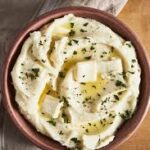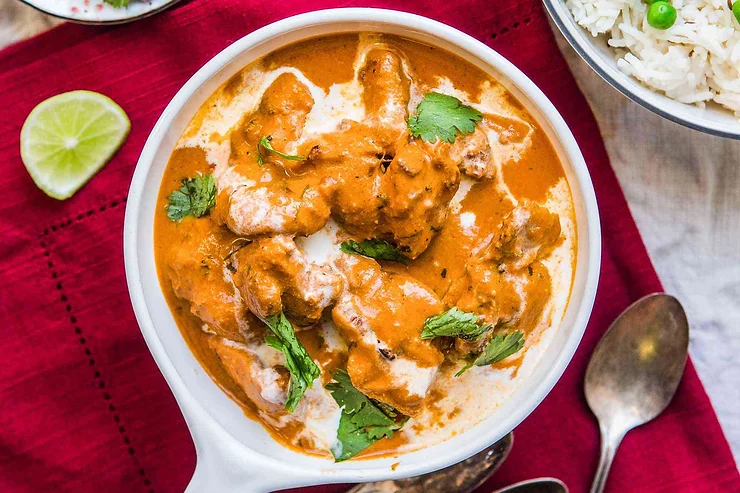Introduction
Pasta is not just for Italian people but has now become a world’s common home cooked dish that can be seen in nearly all the continents. Beginning from its early days as a simple Italian dish, pasta has grown to be a popular meal that has so much versatility in regards to what it can be prepared with. If its the traditional spaghetti and meatballs that tickles youre fancy, or if you have the hankering for the creamy texture of fettuccine alfredo, or if you are just a pasta explorer who likes to explore new frontiers of combining flavor and texture through pasta, then pasta is a dish that you can always rely on. This is the kind of article in which we will highlight the history of pasta, the classification of the pasta varieties, and specific pasta dishes, as well as some tricks on turning your pasta into an exquisite dish.
History of Pasta
All in all, the exact origin of pasta, as well as other types of dough based edibles, is an issue that is not fully understood yet, although some historians and anthropologists credit Chinese civilization for the invention of pasta, which existed in the form of noodles produced from some type of dough thousand years before Christ.
Some people have fixed the origin of pasta as early as the 9th century when Arab traders introduced it to Italy. However the discovery of pasta and pasta making happened in Italy it began its revolution as a food on most plates. Historical records showed that pasta was first used in Italy around the 13th century however, Marco Polo is often cited with taking pasta to Italy having tasted it in China though it is (!) not true.
Now during the 14th century, pasta had been the more common commodity in Italian homes especially in southern Italy with the growth of the durum wheat which is the major ingredient for pasta. In the course of centuries pasta was developed from a humble everyday meal of the poor into almost refined dish which can be served with different kinds of sauces and other ingredients. Today, pasta consumes in various ways, and shapes starting from the traditional Italian ways to the contemporary ways they are prepared.
Types of Pasta: Understanding the Basics
Very often pasta is enjoyed for being versatile, and there is no wonder: pasta dishes are numerous and different. As we will see there are more than 350 types of pasta and each of them has a specific form and function. Here are some of the most popular pasta types:Here are some of the most popular pasta types:
Spaghetti: By far the most popular type of pasta, spaghetti is a long, thin cylinder-shaped pasta that can go well with pretty much any sauce: from tomato- to creamy ones such as carbonara.
Fettuccine: Thin, flat pasta resembling a ribbon and commonly employed in a cream based meals such as fettuccine alfredo.
Penne: Penne is a long and smooth cylinder variety of pasta which has a definite cut at an angle and it is perfect for capturing hearty chunky sauces such as Bolognese or arrabbiata pasta sauce.
Linguine: Closely related to spaghetti, linguine is slightly wider and is usually used with seafood dishes and most typically, linguine with clam sauce.
Fusilli: Spiral shaped, fusilli pasta tends to stick well to sauces; it’s ideal for use in pasta salads or pasta bakes.
Ravioli: Stuffed pasta that is prepared with stuffing in the center and can be any fill including cheese, meat and vegetables. It usually comes with just a tomato or butter sauce; that is, if it is not in a soup.
Lasagna: A flat noodle that is arranged in a sheet form to form layers to prepare lasagna which is a baked dish made of layers of sauce, cheese among others.
Orzo: Rice noodles which are prepared as soups, salads or as a side dish.
Classic Pasta Recipes
Here are some classic pasta recipes that have stood the test of time:
Spaghetti Carbonara Ingredients:
1 pound spaghetti
4 large eggs
8 ounces pancetta or guanciale-a cured pork, which is a little sweeter than bacon.
half cup parmesan cheese finely grated
2 cloves garlic, minced
Then add on to the seasoning, salt and black pepper.
Instructions:
1-Cook spaghetti in a lot of boiling salted water in a large pot until the pasta is al dente. The pasta water should be set aside for 1 cup and after that they drain the pasta.
2-Heat a pan in medium heat, place the pancetta or guanciale in the pan until Well done. Then add in the minced garlic and cook for thirty seconds stirring continuously.
3-In a separate bowl whisk the eggs along with the Parmesan cheese.
4-Put the cooked spaghetti into the pan containing pancetta and stir them so that the two combine.
5-Remove the pan from heat and incorporate the egg and cheese until it is set and pour in pasta water if necessary, thick.
6-They are best when prepared as soon as possible because preparing them with oil, salt and black pepper is enough.
Fettuccine Alfredo
Ingredients: 1-1 pound fettuccine
2-1 cup heavy cream
3-1/2 cup unsalted butter
4-Parmesan cheese: 1 cup of grated
5-Salt and white pepper to the test.
6-Fresh parsley, chopped (optional)
Instructions:
1-Cook the fettuccine in large pot of salted boiling water until it is tender to the bite, then drain.
2-In a large pan melt the butter in heavy cream and bring the mixture to hect.
3-Finally add this cooked fettuccine in the same pan and toss in the sauce.
4-Add Parmesan cheese into the sauce; season with salt and white peppers.
5-It is best served immediately, although you may sprinkle some chopped parsley on the pasta, before serving.
Lasagna Bolognese
Ingredients:
1- 12 lasagna noodles
2- 1 pound ground beef
3- 1/2 pound ground pork
4-1 onion, chopped
5-2 cloves garlic, minced
5-2 cups marinara sauce
7-1 cup ricotta cheese
8-2 cups shredded cheese, mozzarella preferred
9-1/2 cup of parmesan cheese, grated
10-Salt and black pepper for the taste.
11-Fresh basil, chopped (optional)
Instructions:
1-Then prepare the oven by heating it at 375°F (190°C). Lasagna noodles must be cooked according to the instructions on the package; once boiled, they must be drained and kept aside.
2-Heat the oil in a big pan and sauté the onions and garlic for a few minutes; then add the ground beef and ground pork and cook until the meat is browned.
3-Then fold in the marinara sauce, do not forget to add the salt and black pepper. Allow the sauce to reduce and thicken and this should take about 10 minutes.
4-Layer the following in a 9×13-inch baking dish: a thin layer of the meat sauce.
5-The procedures for making this lasagna are: first layer lasagna noodles on the sauce; second layer ricotta cheese on it; third, cover the layer of ricotta cheese with meat sauce; fourth, spread the shredded mozzarella cheese over the layers.
6-It is then layered in a similar manner with noodles on top ,followed by the meat sauce and a nice topping of parmesan cheese.
7-Afterwards, I recommend putting the dish into the oven and covering it with foil before baking it for the next quarter of an hour, that is twenty- five minutes. Take off the foil and bake the dish for another 10 minutes to enable the cheese to melt and so that it bubbles.
8-Once again, let the lasagna to cool a little before slicing if you do not want it to be too soft. Optional serve with fresh basil on top.
Lemon Garlic Shrimp Pasta
Ingredients:
1- 1 pound linguine
2-1 lb large shrimps, shelled and desined
3-4 cloves garlic, minced
4-1/4 cup olive oil
5-1/4 cup lemon juice
6-1/2 of red pepper flake
7-1/4 cup chopped parsley
8-This part is optional Add sweet soya sauce, powdered fried shallots, salt and black pepper to taste.
Instructions:
1-Linguine al dente is what’s prepared from a big saucepan with boiling salted water with the linguine being washed and evaporated.
2-To prepare this recipe, use a big pan, and to it add the olive oil and sauté on medium heat until hot. Stir in the garlic and the red pepper flakes and sauté the mixture for one minute.
3-Next, throw in the shrimp into the pan and let it cook through until they get to the cooked stage, where pinkness fills them and the outside is no longer translucent; about 3-4 minutes.
4-Add in the lemon juice and the linguine cooked and mix it properly.
5-Of course, before serving you need to add salt, pepper, and chop parsley.
Pesto Pasta Salad
Ingredients:
1-1 pound fusilli pasta
2-1/2 cup basil pesto
3-1/2 cup cherry tomatoes – halved
4-black olives for stuffing 1/4 cup and slice them
5-1/4 cup red onion that should be finely sliced.
6-4 tbsp. of freshly grated Parmesan cheese
7-Salt and black pepper Seasoning, to taste
Instructions:
1-Prepare the fusilli by boiling these in a large pot over salted water until these seem tender from the inside but firm on the outside then drain it and rinse the fusilli with cold water so that these cool down immediately.
2-In a large bowl mix together the cooked pasta and cooled batches with basil pesto sauce and cherry tomato accompanied with black olives and red onions.
3-Stir the pasta salad with a spoon until all the ingredients in the bowl are covered.
4-Sprinkle it on salt, black pepper and also grated parmesan cheese just before the food is served.
Fascinating Facts
Ancient Origins: Pasta’s origin has its origins more than 4,000 years ago. Despite most people believing that pasta was an Italian invention, early pastas were made in antiquity, in civilizations such as China and Ancient Greece. The word ‘pasta’ however stems from the Italian origin where ‘pasta’ means paste, the basic raw material that is prepared with Durum wheat and water.
Global Consumption: Pasta is considered to be among the most popular foods in all world. Italy being top most region proclaiming consumption of 23 kilograms (50 pounds) pasta per capita per annum. The second biggest consumer is the United States wherein citizens consume approximately 9 kilogram per capita per year.
Pasta Shapes and Varieties: Currently, there are more than three hundred and fifty pasta and every one of them is created to interact with sauce in a particular manner. There are first instance pasta for light and thin sauces which include spaghetti ,linguine while those for rich chunky sauces include penne, fusilli among others.
Pasta’s Nutritional Value: Pasta is rich in complex carbohydrates that ensure release of energy in the body in a slow manner. For instance, whole grain pasta is much healthier than the normal pasta; they contain more fiber, vitamins and minerals. It is also classified as a food with low glycemic index, in other words, it doesn’t cause a sudden rise in blood glucose levels.
World Pasta Day: The advocacy for this day calls it the World Pasta Day which is observed on the 25th of October every year. The occurrence started in 1995 at the first world pasta congress held in Italy – Rome to be precise.
Most Popular and In-Demand Pasta
Spaghetti: Spaghetti is simply the most famous pasta in the globe, known and consumed by many people. It goes best with many types of sauces ranging from the basic tomato sauce to meaty bolognese sauce therefore it is a staple in almost every home around the world.
Penne: One of the most well-known pasta shapes is Penne; this pasta form is basically hollow and therefore, it is well suited for chunky sauces. Despite the fact that it can be consumed in almost any form it is usually in pasta dishes that are baked such as pasta al forno or dishes that come with thick sauces such as arrabbiata.
Fettuccine: Fettuccine is preferred for cream based preparations, especially fettuccine alfredo; a preparation which has become popular in America. Because of the wide and flat shape it is capable to soak up and cling to thick, creamy sauces.
Macaroni: Macaroni, especially elbow macaroni, is an ingredient that can be applied in preparing various dishes such as the macaroni and cheese. This dish is now considered to be customary and widely eaten in many parts of the world especially in the North America.
Lasagna: Lasagna is not only the pasta product but also the name of the main program dish made of layers of pasta with minced meat, cheese and tomato sauce. They prefer its use especially during events which require the use of large trays, parties and any other formal events.
Conclusion
I believe pasta is more than just a dish, for pasta is part of the culture of many countries of the world. It’s as old as time but its popularity cannot wane, for it is only increasing by the day. Pasta is not a straightforward kind of food but comes in different forms, sizes and ways it is prepared and served thus making it highly commendable by consumers all over the world. Whether you are having delicious spaghetti with olive oil and garlic or hearty lasagna, pasta gives satisfaction and a connection to history.
Besides, because of the swift pace of life these days pasta is still appealing in terms of providing a simple fast yet hearty and tasty dish that can be cooked moreover with readily available ingredients. Its versatility for every consumer considering dietary restrictions like gluten free diet and use of whole grain makes it more of a staple of modern kitchens.
With pasta being a favorite meal in homes across the globe, one can only expect the popularity of this food to increase with time thus making it a constant feature in every household as people come together for their meals.











